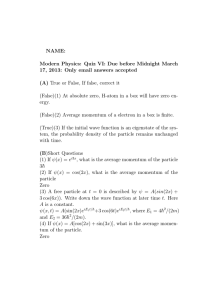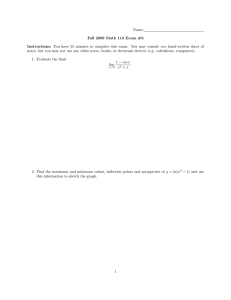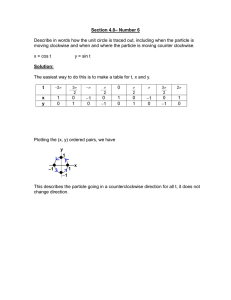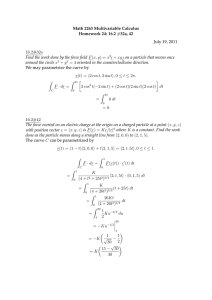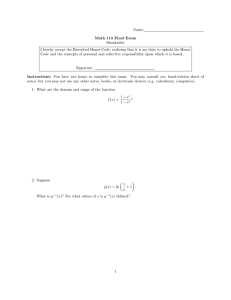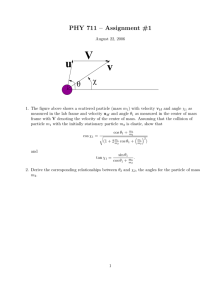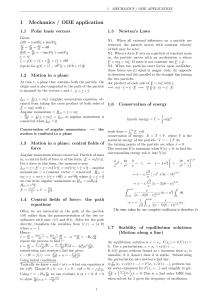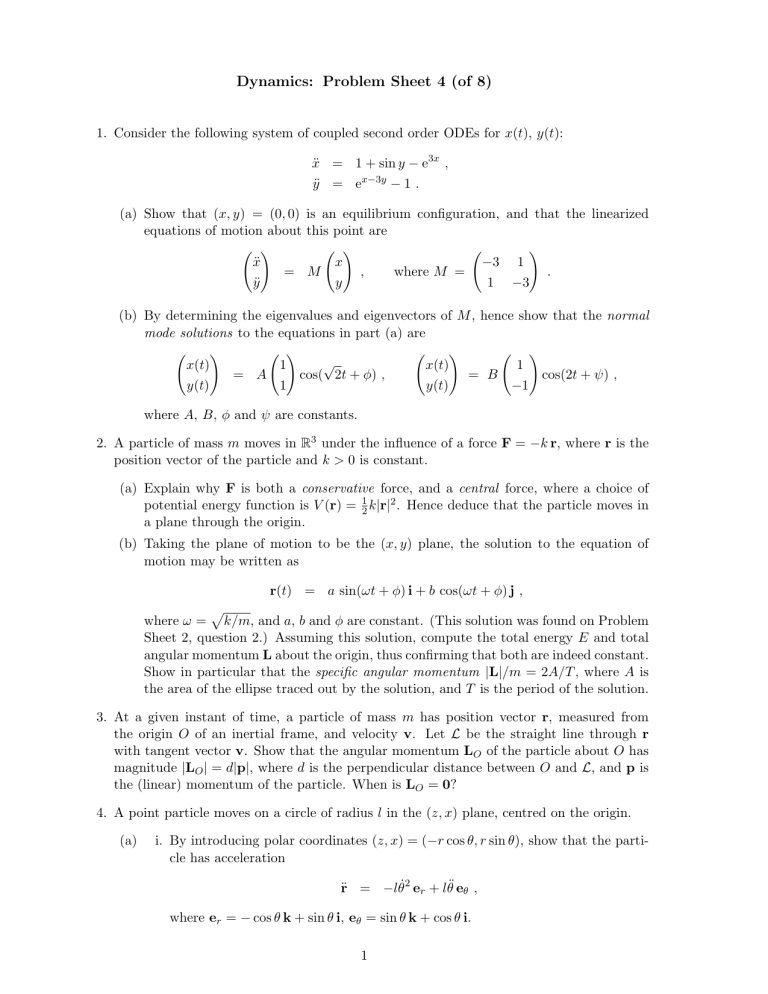
Dynamics: Problem Sheet 4 (of 8) 1. Consider the following system of coupled second order ODEs for x(t), y(t): ẍ = 1 + sin y − e3x , ÿ = ex−3y − 1 . (a) Show that (x, y) = (0, 0) is an equilibrium configuration, and that the linearized equations of motion about this point are ! ! ! ẍ x −3 1 = M , where M = . ÿ y 1 −3 (b) By determining the eigenvalues and eigenvectors of M , hence show that the normal mode solutions to the equations in part (a) are ! ! ! ! √ x(t) 1 x(t) 1 = A cos( 2t + φ) , = B cos(2t + ψ) , y(t) 1 y(t) −1 where A, B, φ and ψ are constants. 2. A particle of mass m moves in R3 under the influence of a force F = −k r, where r is the position vector of the particle and k > 0 is constant. (a) Explain why F is both a conservative force, and a central force, where a choice of potential energy function is V (r) = 21 k|r|2 . Hence deduce that the particle moves in a plane through the origin. (b) Taking the plane of motion to be the (x, y) plane, the solution to the equation of motion may be written as r(t) = a sin(ωt + φ) i + b cos(ωt + φ) j , p where ω = k/m, and a, b and φ are constant. (This solution was found on Problem Sheet 2, question 2.) Assuming this solution, compute the total energy E and total angular momentum L about the origin, thus confirming that both are indeed constant. Show in particular that the specific angular momentum |L|/m = 2A/T , where A is the area of the ellipse traced out by the solution, and T is the period of the solution. 3. At a given instant of time, a particle of mass m has position vector r, measured from the origin O of an inertial frame, and velocity v. Let L be the straight line through r with tangent vector v. Show that the angular momentum LO of the particle about O has magnitude |LO | = d|p|, where d is the perpendicular distance between O and L, and p is the (linear) momentum of the particle. When is LO = 0? 4. A point particle moves on a circle of radius l in the (z, x) plane, centred on the origin. (a) i. By introducing polar coordinates (z, x) = (−r cos θ, r sin θ), show that the particle has acceleration r̈ = −lθ̇2 er + lθ̈ eθ , where er = − cos θ k + sin θ i, eθ = sin θ k + cos θ i. 1 ii. Suppose that the particle has mass m, and that the acceleration in part (a) arises from Newton’s second law with a total force F = −mg k + T . Show that T · er = −mlθ̇2 − mg cos θ . (b) i. Consider swinging on a swing with a chain of length l. Explain why the chain never becomes slack provided − cos θ < lθ̇2 g holds throughout the motion, where θ is the angle the chain makes with the downward vertical. ii. The swing initially hangs downwards, and a friend gives you a push in the horizontal direction √ with initial speed v. Using conservation of energy, show that provided v > 5gl you’ll swing all the way over the top without the chain ever becoming slack. [Please don’t try this! ] , Please send comments and corrections to gaffney@maths.ox.ac.uk. 2

